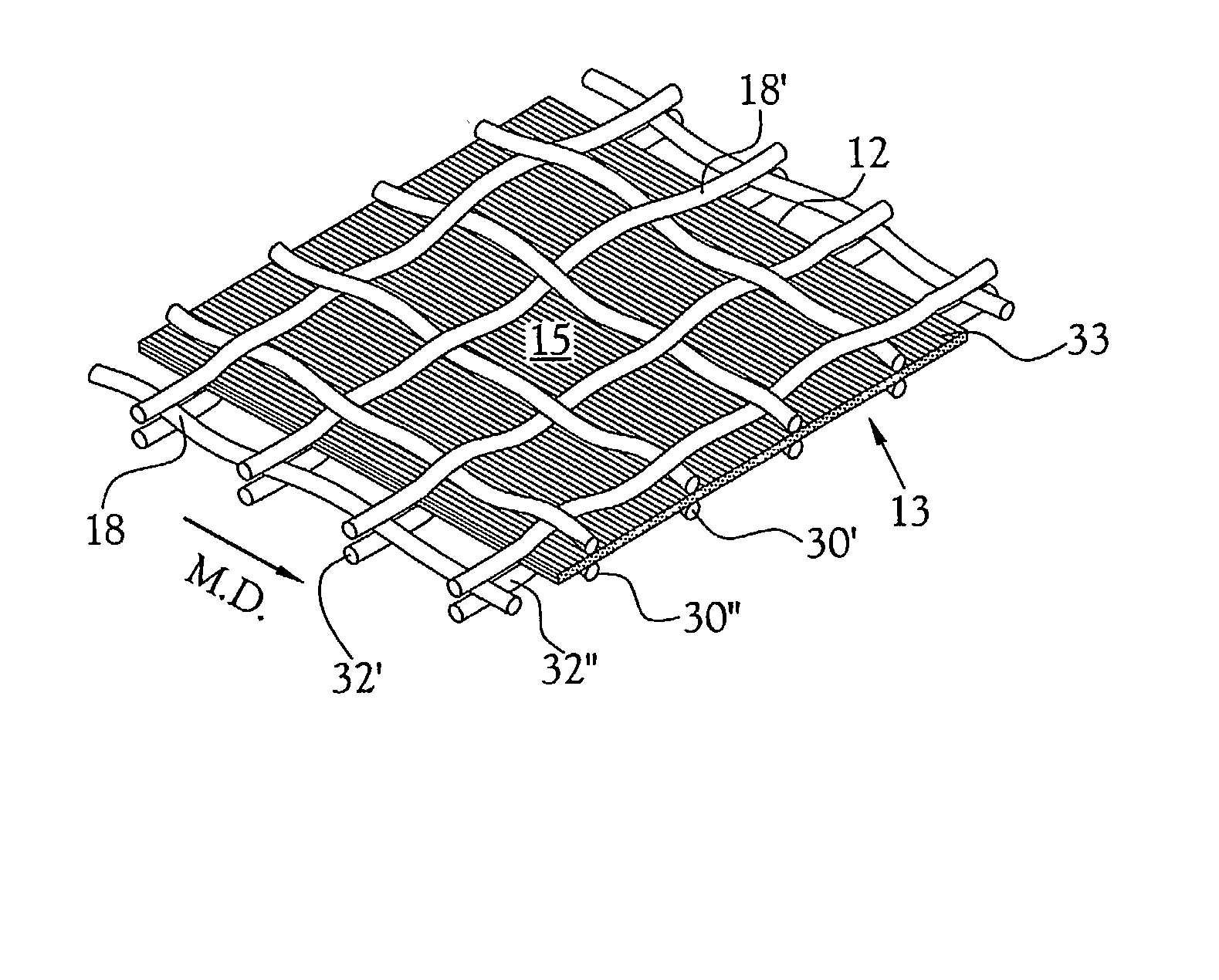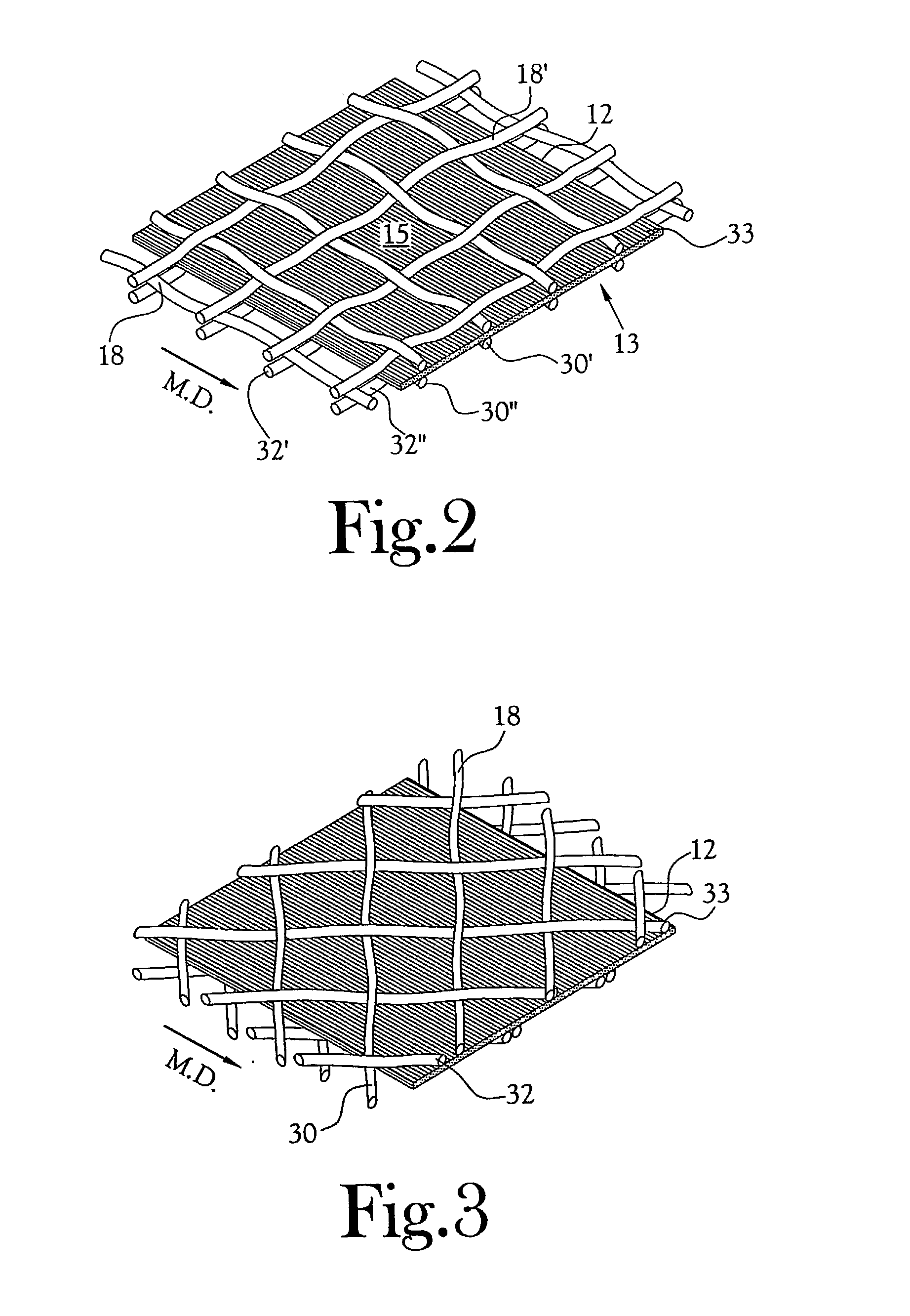Method for the manufacture of a sheet of reinforcing fibers and the product obtained thereby
a technology of reinforcing fibers and reinforcing fibers, which is applied in the directions of knotting, paper/cardboard containers, transportation and packaging, etc., can solve the problems of inhibiting conformability, achieve the effect of reducing the quantity of thermoplastic binder agents required, reducing the contribution of scrim to the overall weight of the product, and increasing the cost of equipment and processing costs
- Summary
- Abstract
- Description
- Claims
- Application Information
AI Technical Summary
Benefits of technology
Problems solved by technology
Method used
Image
Examples
example 2
[0026] Using a method similar to the process of Example 1, a reinforcing sheet was produced comprising a carbon fiber sheet weighing 225 grams / square meter contained between two scrims 18 and 18', each scrim weighing 8 grams / square meter.
example 3
[0027] Using a method similar to the process of Example 1, one of the scrims 18 or 18' was replaced with the reinforcing sheet produced in Example 2. The resulting reinforcing sheet, having a carbon fiber weight of 450 grams / square meter thus includes three parallel scrims (an upper scrim, a middle scrim and a lower scrim) with two layers of carbon fibers interleaved between the three scrims, thus providing improved sheet integrity.
example 4
[0028] A reinforcing sheet having a carbon fiber weight of 900 grams / square meter was produced by overlaying a first reinforcing sheet produced in accordance with Example 3 over a second reinforcing sheet produced in accordance with Example 3 and feeding the two reinforcing sheets between the heated nip rolls 24 and 26 to bind the lower scrim of the first reinforcing sheet to the upper scrim of the second reinforcing sheet.
PUM
| Property | Measurement | Unit |
|---|---|---|
| Percent by mass | aaaaa | aaaaa |
| Weight | aaaaa | aaaaa |
| Thermoplasticity | aaaaa | aaaaa |
Abstract
Description
Claims
Application Information
 Login to View More
Login to View More - R&D
- Intellectual Property
- Life Sciences
- Materials
- Tech Scout
- Unparalleled Data Quality
- Higher Quality Content
- 60% Fewer Hallucinations
Browse by: Latest US Patents, China's latest patents, Technical Efficacy Thesaurus, Application Domain, Technology Topic, Popular Technical Reports.
© 2025 PatSnap. All rights reserved.Legal|Privacy policy|Modern Slavery Act Transparency Statement|Sitemap|About US| Contact US: help@patsnap.com



